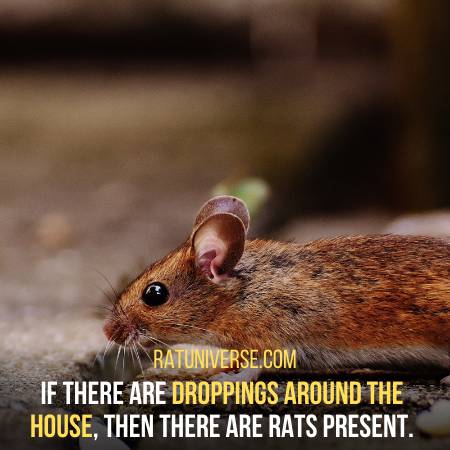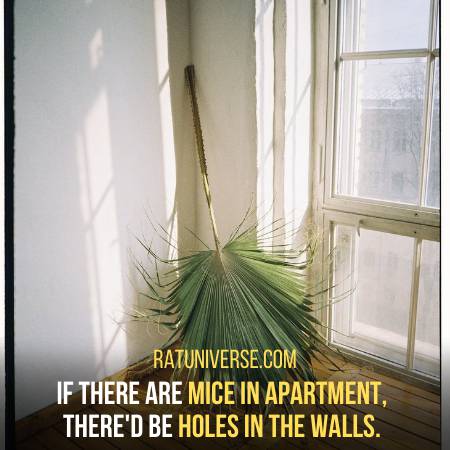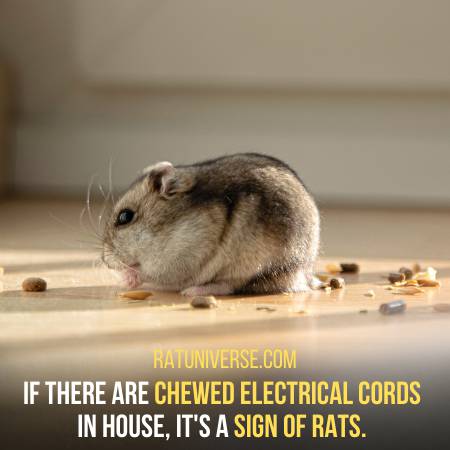You might think you are sitting on your couch watching Netflix with nothing to worry about. But what if I told you that there is a mouse in your apartment?
11 Signs Of A Mouse In Apartment
What will happen next? Well, the first thing you need to do is spot it.
In this article, we have explained some points to spot the rats in the apartment.
1. Look For Droppings
Droppings are usually about 1/4″ in diameter. They are black, brown, or grey, depending on the age of the dropping. Mouse droppings have ridges on them which can help you identify if it is a rodent dropping.

Droppings will also dry up and crumble easily with slight pressure, so they are most likely old if they are hard.
2. Smell Of Urine And Feces In The Apartment
The smell is powerful and foul if a rat or mouse has died in your wall or ceiling space. Usually, we can smell them in our homes when it gets hot and humid outside, and it’s time to turn on the air conditioner.
The strong odour can be smelt in your home when you turn on the AC. In most cases, the dead rat or mouse will start to rot and smell if it is not found soon after it has died.
3. Signs Of A Mouse In Apartment – Various Chewed Holes In Walls And Floors
Chewing holes with a rough edge by a mouse or a rat in a wall or floor signifies that the mice are living in your apartment.
The more holes you find, the more likely there will be a nest of baby mice also living inside your walls or floor space.

Mice can chew their way into an apartment through tiny areas. They are especially likely to take up space between walls and openings around pipes.
Look for holes, near baseboards or corners of rooms, where the wall meets the floor or ceiling. You may be able to put a piece of metal over these holes until you have time to set out traps.
4. Look For Damage On Shoes, Clothing, And Stuff
Mice will use the material from your shoes, clothes, or furniture as nesting materials. If you see any holes in these items, a mouse has likely chewed them.
Tiny tears can be found on fabric from mice teeth. However, these holes will be much smoother, smaller, and have a nice frayed edge.
Inspect around the edges of your carpets for tacks as they can rip material from your shoes, clothes, or furniture items if you step on them with bare feet.
5. Signs Of A Mouse In Apartment – Chewed Electrical Cords In The Apartment
Mice or rats are drawn to the shelter of an apartment because of its warmth. They will also find any possible way to feed and stay warm. Chewing on electrical cords is a common problem if you have mice living in your home.

Most problems with electrical cords can be solved by keeping all items off the floor.
Install baseboard molding to create a barrier between the floor and electrical cables. It will protect your electrical cords from mice that want to feed or stay warm inside your apartment.
6. Look For Nesting Materials In The Apartment
Established mouse nests are found behind walls, under cabinets, storage areas, other dark, cool places.
Nests can consist of shredded paper, insulation, cloth, or other items that mice or rats can use.
You will generally find that the nests are usually spherical, with a total weight of about 2 pounds.
7. Smudges On Surfaces And Paint Chips On Floor
Mice like to travel along walls, using them as guides when moving around in the darkness. If they rub against paint, it may leave a smudge mark or sometimes small piles of dust on the wall.

If you notice any marks like this, it can be caused by mice travelling along baseboards.
8. Scratching Noises And Squeaks At Night
Mice will make noise, and you may hear them running around your walls, ceiling, or floor space at night. You can hear them chewing or gnawing on whatever they find inside your apartment.
If you have mice or rats living in your home, you will hear them more often as they search for food and when they are resting.
If you hear gnawing or squeaking noises in your house at night or during the day, it’s a sign that mice are living inside.
9. Damage To Food Items And Containers
You’ll notice the damage to food items like cereal boxes, crackers, and chips. Rodents will chew through these containers to get to the food inside them.

If you see these types of items in your apartment that have been chewed on or opened, then rats are feeding on them. It’s best to dispose of these types of food products.
Also, mice will often eat through plastic water bottles, which can be a sign if found in your apartment. You need to remove all food items if you are noticing this problem.
10. Strange Sounds Coming from Your Walls
You’ll notice strange sounds coming from walls or ceilings during the day when no one’s home.
A common sign that you have mice in your home is hearing strange noises during the daytime when no one is in the house.
These sounds are like a high-pitched squeaking noise that comes around a couple of times a minute.
Mice are most active at night and make noise at that time. Yet, if you hear these sounds during the day, it may mean that mice are living inside your walls or ceiling.
11. Signs Of A Mouse In Apartment – Tiny Trails Of Dirt Along Baseboards
See tiny trails of dirt along baseboards and doors – these signs show areas where mice have been traveling in and out of the apartment.
Mouse droppings are another indicator that you have mice in your home. They will be on or near food sources which is an easy way to know their droppings.

To identify droppings, look for them in dark areas where mice may have been traveling along walls or near doors.
Mouse droppings are small and brown, the size of a grain of rice or just slightly larger. They will be near food sources, this is another good sign that you have mice living inside your apartment.
You can tell where they have been traveling by looking for tiny trails along baseboards or wherever they are using as a path to get around.
Conclusion
You can’t always see a mouse, but other signs may indicate the presence of mice. The droppings and urine smell will help you find them – if it smells like wet dog or ammonia, the odor is coming from mice.
Pay attention to chewed holes in your apartment walls and floors as well as damaged furniture for more clues about where they might be living.
If you hear scratching noise at night or squeaks in the day, those could point to rodent activity nearby. Look out for damage on food containers like cereal boxes or crackers – rats chew through these to get what’s inside! Please do let us know about your experience with rats.

Leave a Reply